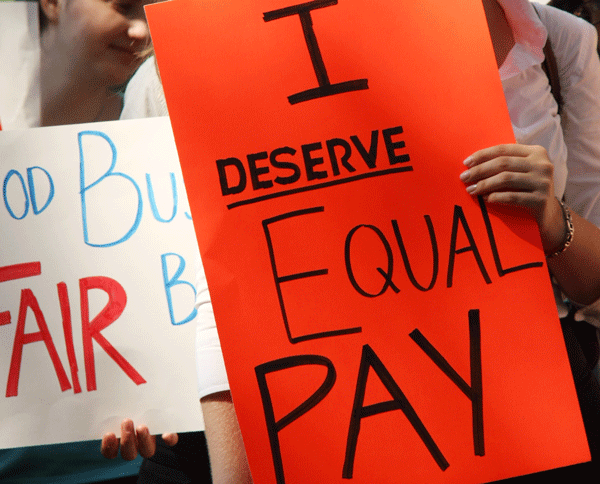Debate Analysis: Women’s Pay Statistics Misleading
Emily Goff / James Sherk /
When a questioner at Tuesday’s presidential debate stated that women make only 72 cents for every dollar that men make, both President Obama and Governor Mitt Romney agreed. Not so fast. This figure is highly misleading.
The statistic comes from a Census Bureau report (see figure 2 here) comparing the median earnings of men and women in full-time jobs. However, many factors affect pay—e.g., occupational choice, education, experience, and hours of work. Doctors make more than store clerks, no matter their gender. Employees who work longer hours tend to make more, too.
The Census report ignores all such factors. So it can say nothing about whether men and women with the same level of job performance make the same amount.
Women are more likely than men to work in industries with more flexible schedules. Women are also more likely to spend time outside the labor force to care for children. These choices have benefits, but they also reduce pay—for both men and women. When economists control for such factors, they find the gender gap largely disappears.
A 2009 study commissioned by the Department of Labor found that after controlling for occupation, experience, and other choices, women earn 95 percent as much as men do. In 2005, June O’Neil, the former director of the Congressional Budget Office, found that “There is no gender gap in wages among men and women with similar family roles.” Different choices—not discrimination—account for different employment and wage outcomes.
For the same reason, the recession has hit men harder than it has women. Since the recession, net employment for men has fallen by over 3 million jobs. Female employment has fallen by less than half that amount. Put another way, the male unemployment rate is currently 0.5 percentage points higher than the female unemployment rate.
No one would assert that anti-male bigotry explains the recession’s disproportionate impact. Rather, more men than women work in the construction, manufacturing, and finance sectors—the three sectors most affected by the recession. Without any discrimination, job losses in these sectors will still hit men harder.
The 72-cent figure also gives an inaccurate impression of the opportunities available to aspiring career women. While some discrimination does occur, it is the exception, not the norm—and it’s also illegal. Federal and state laws already prohibit sex-based discrimination.
Women have also made great strides in the workplace over the past generation. More women than men now earn bachelors and graduate degrees, and women now make up half the workforce. Hard-working women have many opportunities available to them. They should ignore misleading statistics that claim otherwise.
The greatest threat to women’s opportunities today is the weak economy. Federal policy should be focused on enabling a robust, growing economy where free enterprise can flourish, thereby improving choices and opportunities for all workers. That will help get Americans—men and women—back to work.

